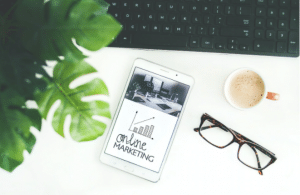How To Be More Sustainable With Your Marketing

We live in a time when it is more important than ever to be sustainable. Our planet is heading to a point of no return and we need to take care of it while we can, protecting it for our future generations. As a business, it is natural that you will want to incorporate sustainability into your business model – after all, not only is this great for you and for the environment but also can help to draw people in and encourage them to purchase from you as well. No matter what sort of business you are, whether you work in
product design and development
or run a marketing agency, there are always things you can do. If you are looking to be more sustainable within your company then we have put together some top tips to help you be more sustainable in your marketing.
- Get more digital – We live in a time where everyone is connected to the web and printing is dying. No longer do you need to have your business cards all printed out, or to bring loads of flyers with you to a trade show or an event. Instead, why not generate a QR code that can lead someone straight to your website or contact details? This saves paper wastage and also means that they will be straight on the brand or page that you want them to be – rather than them having to type it all in manually.
- Don’t use promo items that will get chucked away –
We’ve all been to events or trade fairs where we have collected up a myriad of objects that people are trying to push. Whether this is a pen, a novelty stress ball, or a memory stick with one singular press release on it, most of the time it is things that we will never look at again and probably end up chucking away. Instead, give away items that are useful and not so damaging such as a reusable coffee cup, hemp tote bags, soap, or candles.
- Recycle where you can –
So many offices still don’t have a strong
recycling
strategy so it is important for you to do your bit with this. If you do need to use paper items, then once you are finished with them, don’t chuck them away, instead recycle them. This seems simple but so many businesses don’t do this as often as they should.
- Get certified – If you are offering services or working in a certain way that really promoted the planet and is eco-friendly, then why not get certified? By having this certification it will show your commitment to the environment and how much you really care. Certain certifications can be actively sought out by customers so can help generate more business and income too. These include ones such as Fairtrade, Waterwise, Organic, Rainforest Alliance, and if something is vegan.
These are just a few simple ways you can be more sustainable within your marketing. By making small changes you will soon find that you have made a big difference.


